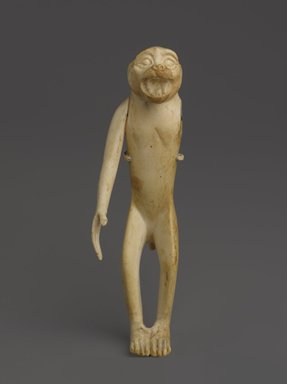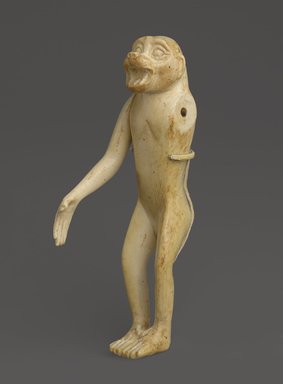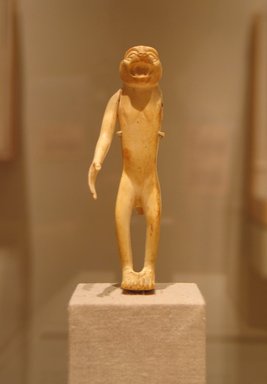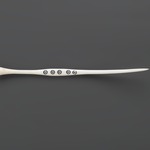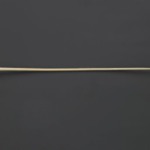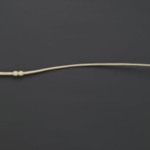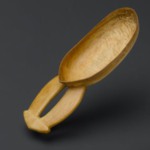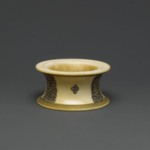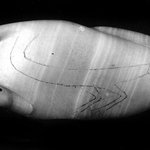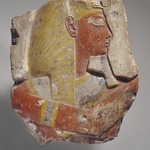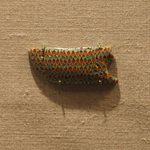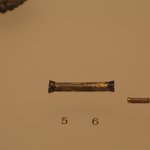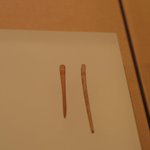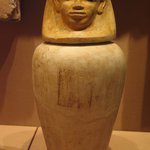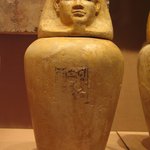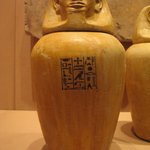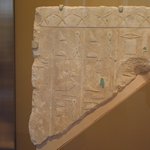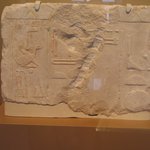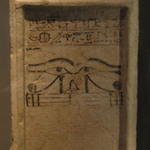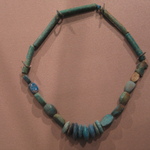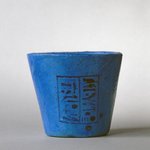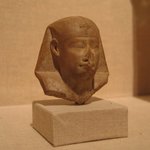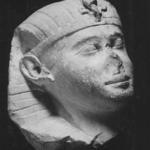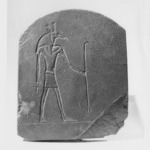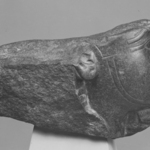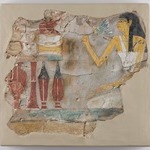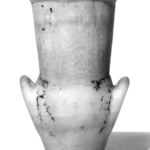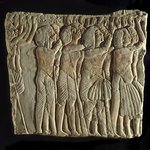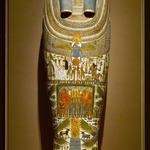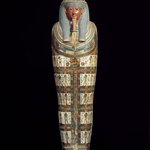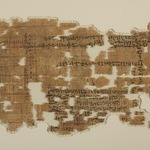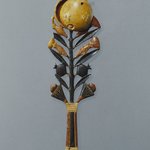Monkey
Egyptian, Classical, Ancient Near Eastern Art
On View: 19th Dynasty to Roman Period, Martha A. and Robert S. Rubin Gallery, 3rd Floor
Originally this whimsical representation of a monkey had movable forepaws. The left is now gone; only the wooden peg that held it in place survives. The piece may have been used as a diversion by a nurse to amuse and entertain a very young child. A strikingly similar piece, no doubt by the same master craftsman, was found by the English archaeologist Howard Carter in the tomb of Tutankhamun.
MEDIUM
Ivory
DATES
ca. 1336–1327 B.C.E.
DYNASTY
late Dynasty 18
PERIOD
New Kingdom
DIMENSIONS
4 3/16 x 1 x 1 3/4 in. (10.7 x 2.5 x 4.4 cm)
(show scale)
ACCESSION NUMBER
55.176
CREDIT LINE
Charles Edwin Wilbour Fund
CATALOGUE DESCRIPTION
Ivory statuette of standing, hybrid monkey. Feet together, mouth open, right arm extended forward with open hand. Arms carved forward with open hand. Arms carved separately, and inserted with wooden pegs. The figure has some human and some simian features and so does not reproduce any member of the ape family. Use uncertain, possibly a toy, possibly a decorative piece.
Condition: Left arm lost (wooden insertion peg remains). Tail broken. Feet broken and repaired.
CAPTION
Monkey, ca. 1336–1327 B.C.E. Ivory, 4 3/16 x 1 x 1 3/4 in. (10.7 x 2.5 x 4.4 cm). Brooklyn Museum, Charles Edwin Wilbour Fund, 55.176. Creative Commons-BY (Photo: Brooklyn Museum, 55.176_PS9.jpg)
IMAGE
front, 55.176_PS9.jpg. Brooklyn Museum photograph, 2015
"CUR" at the beginning of an image file name means that the image was created by a curatorial staff member. These study images may be digital point-and-shoot photographs, when we don\'t yet have high-quality studio photography, or they may be scans of older negatives, slides, or photographic prints, providing historical documentation of the object.
RIGHTS STATEMENT
Creative Commons-BY
You may download and use Brooklyn Museum images of this three-dimensional work in accordance with a
Creative Commons license. Fair use, as understood under the United States Copyright Act, may also apply.
Please include caption information from this page and credit the Brooklyn Museum. If you need a high resolution file, please fill out our online
application form (charges apply).
For further information about copyright, we recommend resources at the
United States Library of Congress,
Cornell University,
Copyright and Cultural Institutions: Guidelines for U.S. Libraries, Archives, and Museums, and
Copyright Watch.
For more information about the Museum's rights project, including how rights types are assigned, please see our
blog posts on copyright.
If you have any information regarding this work and rights to it, please contact
copyright@brooklynmuseum.org.
RECORD COMPLETENESS
Not every record you will find here is complete. More information is available for some works than for others, and some entries have been updated more recently. Records are frequently reviewed and revised, and
we welcome any additional information you might have.
Can you tell me a little bit about this?
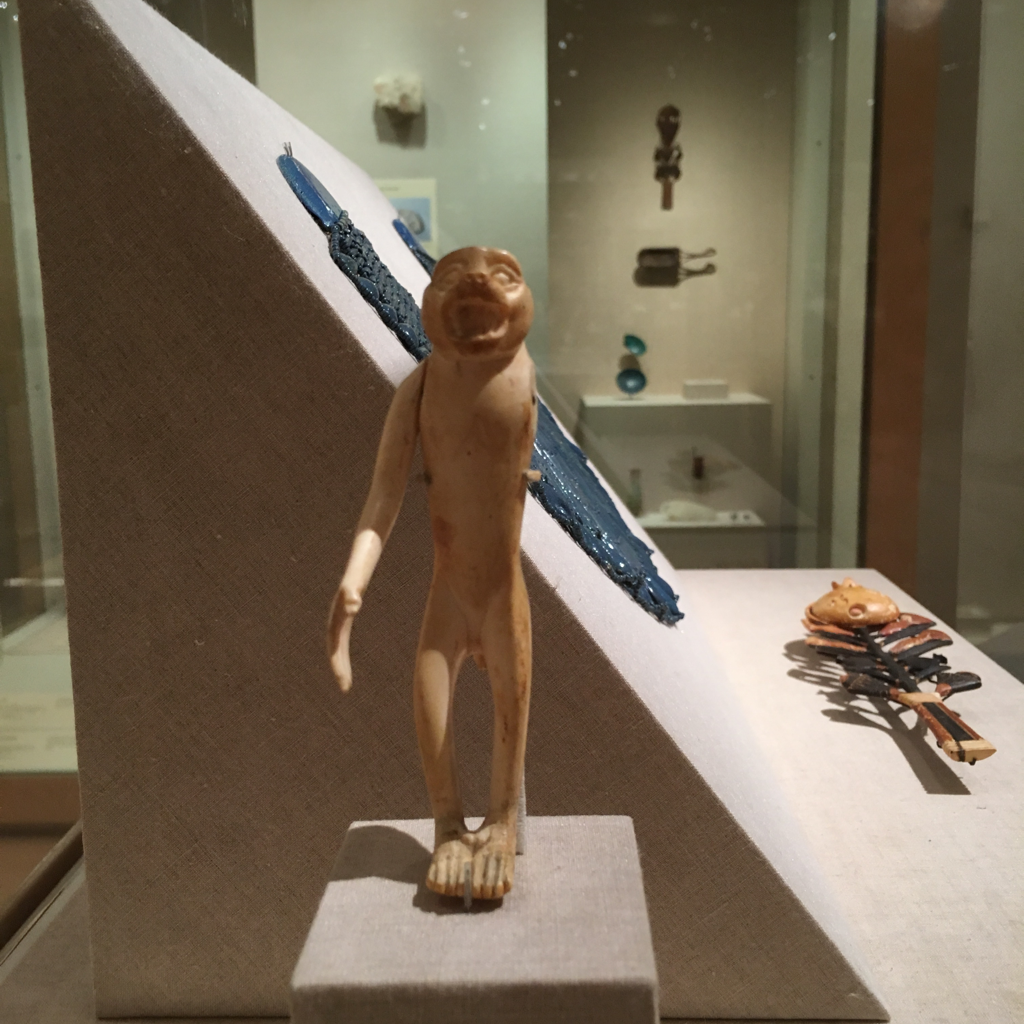
This image of a hybrid monkey was likely used to entertain a very young child. Essentially it is a toy, as you might be able to tell from the moveable arms.
